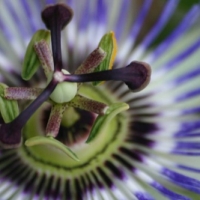If I Have Been Diagnosed with Cancer, Should I Consider Taking an Aromatase Inhibitor?
Posted on December 23rd, 2014What is aromatase? Sounds like a Glade plug in, doesn’t it? Aromatase is an enzyme, a catalyst that stimulates and controls chemical reactions throughout the body. It is found in the endoplasmic reticulum (the membrane network within cells involved in the fusion, alteration, and transfer of cellular materials). Aromatase is a component of many different tissues such as; blood vessels, fatty tissue, brain, ovaries, testicles, skin, bone, endometrium and the placenta and can be found in dogs, humans, most mammals and certain fish. So what does aromatase actually do?
It is responsible for changing male testosterone and female androgen into excess estrogen which augments Plechner’s Syndrome’s deregulation of the immune system and eventually can lead to the development of allergies, autoimmunity and cancer. Factors that stimulate an increased production of this enzyme include age, increased body fat, insulin, certain gonadotrophic hormones, alcohol (not red wine), a zinc deficiency and certain diets.
The medical profession may often suggest using a synthetic, aromatase inhibitor to decrease the possibility of a patient with an estrogen responsive tumor, from turning the patient’s testosterone or female antigen into different forms of estrogen which might potentially cause further tumor growth.
Since there may be many side effects that are recognized with the use of a synthetic, aromatase inhibitor, it would be best to first check a patient’s total estrogen whether male or female, and if a synthetic, aromatase inhibitor is prescribed, after three weeks, a follow up total estrogen should be performed to see if any actual testosterone or androgen has been turned into more total estrogen.
If it is determined that using a synthetic, aromatase inhibitor may be worth including in the therapy, please make sure the side effects do not outweigh its value.
A list of some of the side effects may vary between men and women but may include migraine headaches, depression, joint pain, stomach cramps, and weakness, leading to wobbliness, shaking, hot flashes, disorientation and insomnia.
Unfortunately, total estrogen is usually not measured in allergy, autoimmune and cancer patients, and there is lack of realization that a very large amount of damaging estrogen can be produced in the outer layer of the adrenal cortex due to a middle layer adrenal cortisol imbalance.
For further information on this imbalance, please go to Dr. Plechner’s Corner.
Dealing with some of the above conditions, require the assistance of a medical professional but I encourage you to start as I did, for myself, my family and our pets, by adjusting all of your diets. You need to include foods that contain aromatase inhibitors, especially if you are adrenal estrogen dominant or already demonstrating signs and symptoms of Plechner‘s Syndrome.
A number of foods and supplements have been proven to reduce the effects of aromatase. The following is a list of foods and supplements that come from the family of flavonoids (antioxidant plant compounds) which are aromatase inhibitors and will help reduce this dangerous estrogenic effect in your pet, your family and yourself.
- Chrysin is a flavonoid that comes from the Passion Flower. Of the plants that inhibit aromatase, this seems to be the most potent, and most available as a manufactured supplement.
- Asperginin is a flavonoid that occurs in parsley, celery, chamomile, romaine, leafy lettuce, artichokes, blueberries, oranges and tomato sauce.
- Quercetin is a flavonoid that occurs in garlic and apples. It is also found in cabbage, broccoli and cauliflower (Important note: these vegetables, when eaten raw, can compromise thyroid hormone production),
- Resveratrol is a flavonoid found in the seeds and skin of red grapes and quite high in the muscadine grape and its wine.
- Oleuropein is a flavonoid found in olive oil, olive leaves, cranberries, blueberries and peanuts.
- It has been also reported that extracts from both the portabella and reishi mushrooms contain aromatase inhibitors.
- Naringenin is a flavonoid found in grapefruit, sweet orange and Chinese bitter orange. These should not be eaten in large quantities because they can inhibit an enzyme responsible for breaking down estrogen which would create a result similar to elevated aromatase.
Of special interest, what is the “Mediterranean” diet? It has been known to have lowered the death rate in a number of different medical ailments. What food products does the Mediterranean diet include? It consists of eating fresh fruits and vegetables and drinking red wine.
Just remember that, you are what you eat. I know that sounds clichéd but it is also very true. What you feed your family pets, your family and yourself can determine the future health of all concerned. Healthy diets can help control elevated estrogen, and the dangerous effects, caused by aromatase. Do not allow it to undermine the immune system and it’s the successful hormone antibody control that is so vital for everyone’s present and future health.
Healthfully Yours,
Dr. AL Plechner & David Spangenburg

